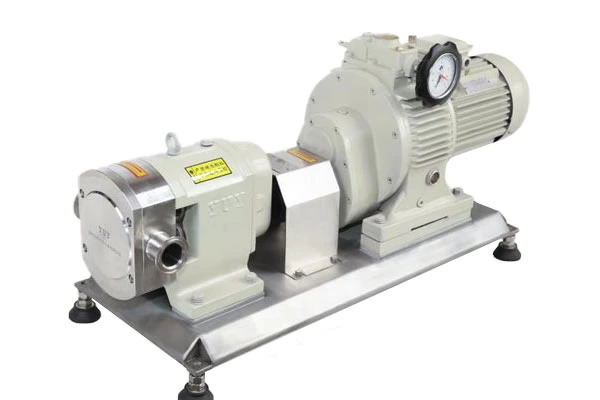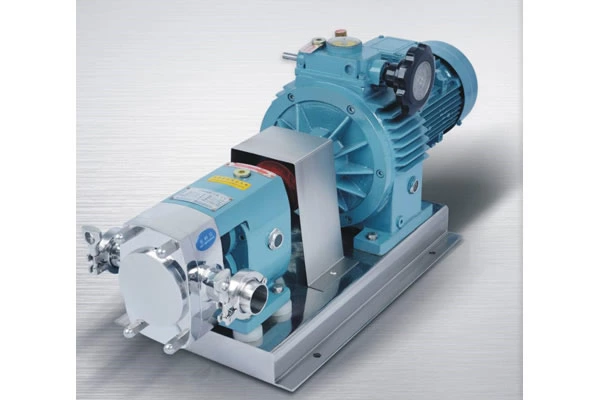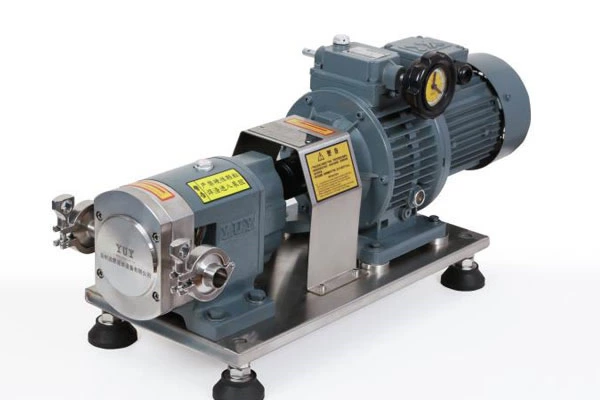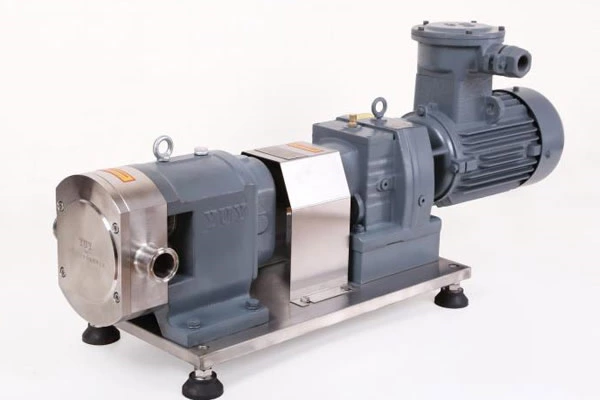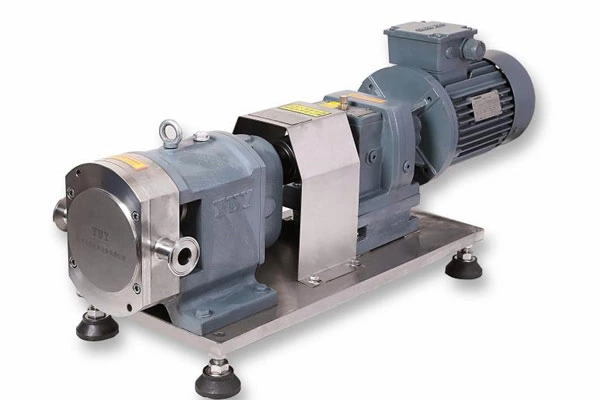The Rubber Bearing Of The Sanitary Rotary Vane Pump Solves The Problem Of Backflow In The Guide Groove
At present, most of the Sanitary Rotary Lobe Pump sold on the market are vertical arrangements, and the pump and the motor are coaxial, so that the weight of the rotating parts is in the same direction as the water pressure suffered by the impeller; secondly, the submersible sewage pump is used underwater, and the sewage medium transported contains impurities, sludge and other materials; the submersible sewage pump is a kind of centrifugal pump. During its operation, the power always increases with the increase of flow. When the flow exceeds the design flow and reaches a certain value, the motor will be destroyed due to overload. The reliability of sanitary rotary vane pumps needs to be improved, so improving the technical content of its products is an important direction for manufacturers to develop in the future.
At present, sanitary rotary vane pumps in China are mainly produced and manufactured by domestic manufacturers, and a small part of the products are exported from abroad. Improving the technical content of products and strengthening the market competitiveness of products can drive the development of the industry. Judging from the current situation, the market prospects of sanitary rotary vane pumps in my country are very broad. However, everything is divided into two parts. The most critical problem for sanitary rotary vane pumps is reliability, because the sanitary rotary vane pump is used under liquid; the medium conveyed is a mixed liquid containing solid materials; the pump is very close to the motor; the pump is arranged vertically, and the weight of the rotating parts is in the same direction as the water pressure on the impeller. These problems make the requirements of sanitary rotary vane pumps in terms of sealing, motor load capacity, bearing arrangement and selection higher than those of ordinary sewage pumps. The following is a brief introduction to the bearings of sanitary rotary vane pumps.
For sanitary rotary vane pumps, their bearings are made of rubber. Because most sanitary rotary vane pumps have the phenomenon of backflow, domestic sanitary rotary vane pumps have always been inefficient, high-cost and poor in anti-sand performance. As we all know, the bearings and shafts of sanitary rotary vane pumps are very susceptible to wear, which reduces the life of sanitary rotary vane pumps. Therefore, a new type of submersible pump rubber bearing that is resistant to sediment and can overcome the phenomenon of backflow in the diversion groove, and can solve the problems of low efficiency, high cost operation of submersible pumps, and wear of bearings and shafts of submersible pumps is a technical problem that needs to be solved urgently.
In order to effectively solve this technical problem, a bearing body is provided with a diversion groove on the inner surface, and a sealing ring is provided at the upper end of the bearing body. The sealing ring and the bearing body are continuous casting bodies of the same material, and the inner diameter of the sealing ring is slightly smaller than the inner diameter of the bearing body. The outer peripheral surface of the sealing ring is a conical surface, and the inner peripheral surface is provided with an annular dovetail groove. The sanitary rotary vane pump rubber bearing has appeared in people's field of vision.
Compared with the existing technology, the sanitary rotary vane pump rubber bearing solves the phenomenon of backflow in the diversion groove, and solves the problems of low efficiency, high cost operation of submersible pumps, and wear of bearings and shafts of submersible pumps. The experimental results show that the flow rate and head of the sanitary rotary vane pump are increased by 1%-2% respectively, which can increase the efficiency of the original designed water pump by 1.5%-3%. The sanitary rotary vane pump rubber bearing not only greatly reduces energy consumption, but also greatly reduces the axial force of the water pump, while also greatly slowing down the thrust of the motor and the friction of the bearing, extending the service life of the motor by about 1 times.
